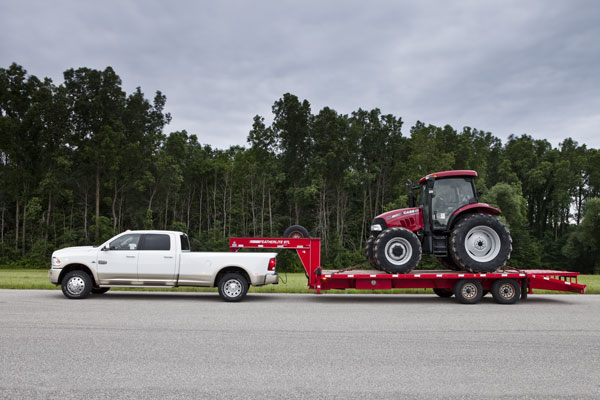Standardized Towing Tests Could Bring Bad Grades

Society of Automotive Engineers to implement tow rating standards for trucks
by Patrick Rall
In 1972, the Society of Automotive Engineers implemented standardized
testing procedures to measure the real world horsepower output of
engines in the United States and now – some 40 years later – the group
is looking to offer a similar standardized program to allow consumers to
be able to clearly compare the capabilities of new pickup trucks. The
problem is that once companies start using the standardized testing to
determine towing capabilities rather than their own procedures, we can
expect to see a decline in the advertised towing ratings for trucks
compared to what was used prior to the SAW standardized testing.
Over the past few years, the Detroit automakers have been going head
to head with their trucks to see who can boast of the biggest towing and
hauling capacities. This is why we have seen a company come out and
brag that they offer the most towing capacity in the segment only to
have another company announce a week later that they increased their
towing numbers without any real changes in the trucks power or gearing.
Previously, all that an automaker had to do was find some new test to
allow them to claim a slightly higher towing capacity, then they could
announce a new max towing level. The problem is that each company used
their own tests to see how much their trucks can tow. If you aren’t
clear on how that would be an advantage, imagine if companies were free
to come up with their own methods of measuring their fuel economy
numbers. This SAW standardized testing will allow the group to put the
trucks on the exact same testing grounds under the same conditions to
establish just how much new trucks can really pull – safely.
The Society of Automotive Engineers testing procedures will include
such factors as acceleration, braking, towing up a steep grade in triple
digits temperatures and stability while towing. Trucks will be tested
in the same conditions with varying weights to see how much they can tow
while maintaining a level of control and safety mandated by the SAE.
This is good news for the consumer, as we all will know that when a
company says that it can tow 20,000 pounds that is the same 20,000
pounds for every truck, tested in the same conditions – so there will be
a level playing field for all competitors in the segment.
The downfall
is that once the SAE standards cover the entire truck class and include
all of the major brands, we can expect to see the numbers drop a bit.
An example is the power drop in and around 1972, when the SAW power
testing measures were implemented and there was a massive drop in power
across the entire American car market. However, much like the power
numbers, consumers will then know the true abilities of their new truck
and over time, automakers will find ways to increase their towing
capacities under the new testing procedures.
What do you think? Good idea or bad idea? Sound off in the forum!
